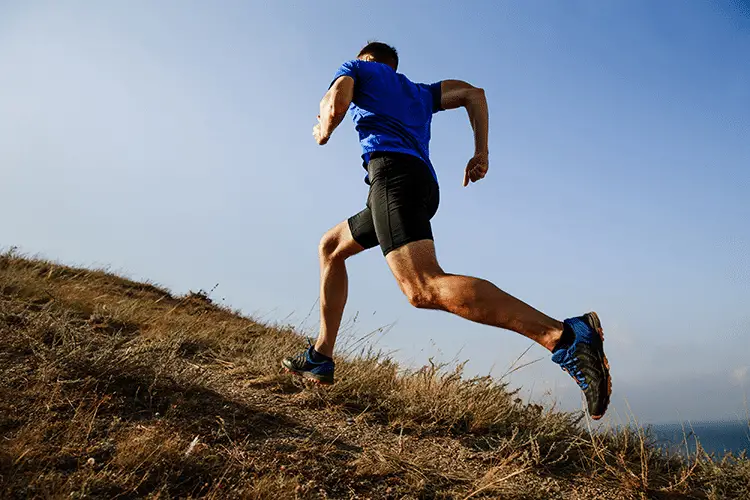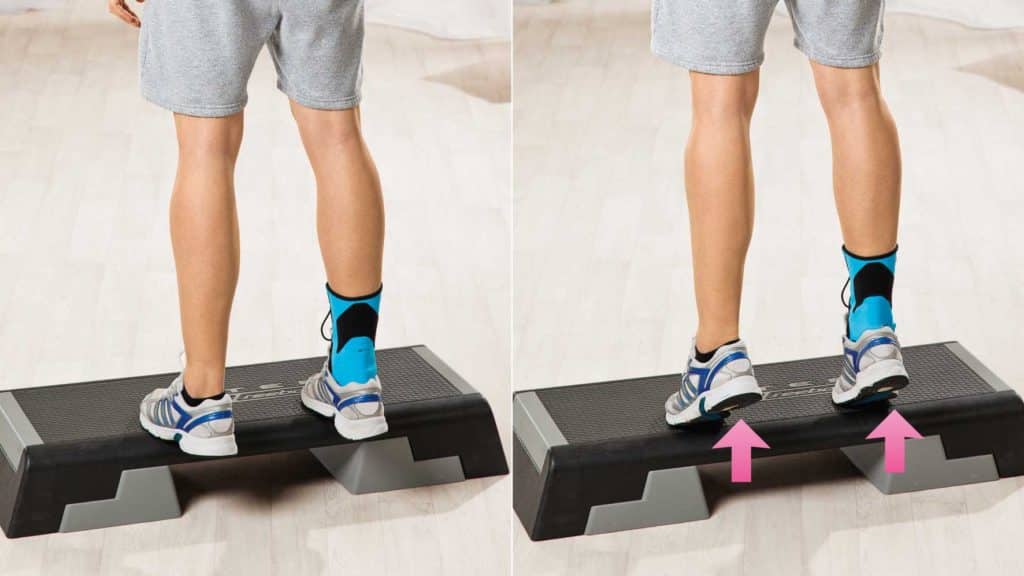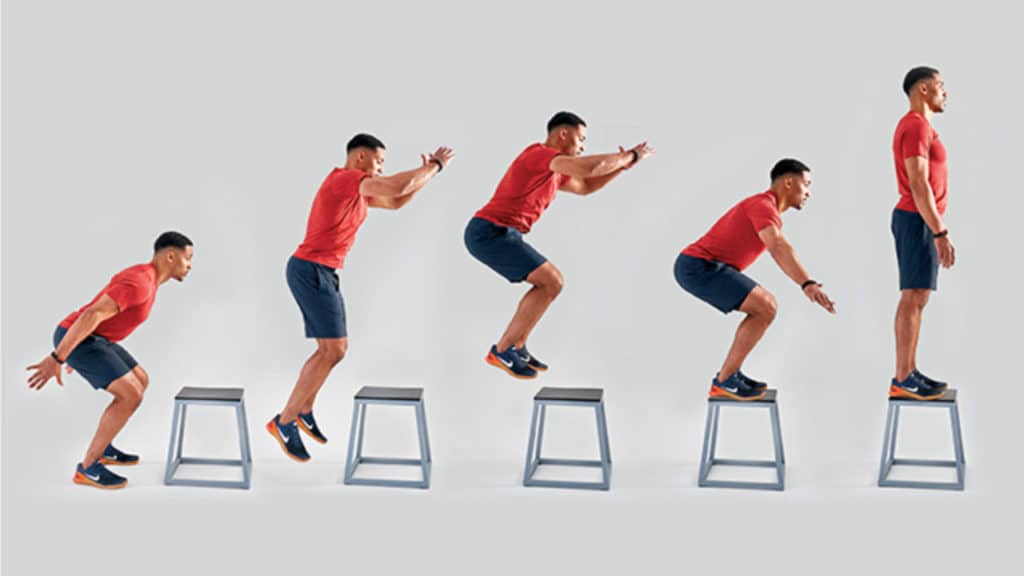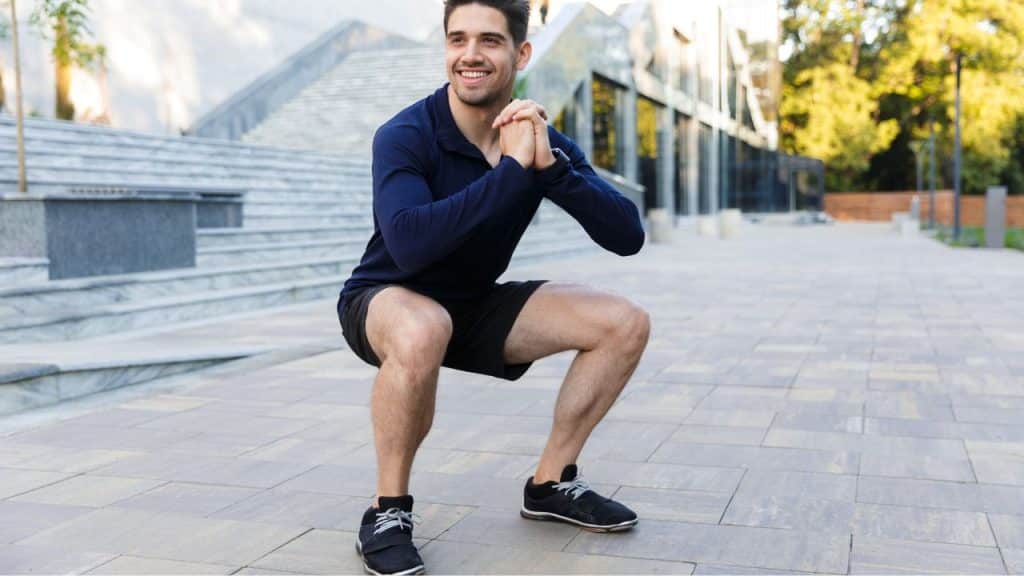Last Updated on: 29th April 2024, 11:17 pm

No matter how skilled you are in basketball, there is no substitute for playing at or above the rim.
An athlete’s vertical is one of the most important aspects of playing competitive basketball, but it can also be one of the hardest skills to improve upon, which leads athletes to ask how to jump higher in basketball.
Although there is a lot of focus on weight training to build core and leg strength, this is not required when looking to build the fast-twitch muscles that will lead to increasing your vertical.
Instead, what it takes is a regular regimen of four simple exercises that will take you to the next level.

How Can Basketball Players Jump So High?
Basketball players can jump high due to a combination of factors. They rely heavily on their lower body muscles, which they use for explosive movements.
Proper technique is also important, as poor jumping technique can cause a player to lose inches off their vertical. Increasing overall power-to-body weight ratio is key to improving vertical jump.
Basketball players also have strength that allows them to thrust themselves high into the air. To safely add inches to their vertical jump, players must go through a flexion and subsequent extension of the ankle, knee, and hip.
Workouts And Exercises To Jump Higher In Basketball
Hill Repeats

Hill repeats are one of the simplest ways to develop leg strength and flexibility, which will ultimately result in an increased vertical.
Although the exercise may seem as simple as running up and down a hill, to maximize your workout, there are a couple of principles that should be followed.
Choose a Hill With at Least 100 yards of Climb
To build leg and calf strength, it is important to experience sustained levels of resistance. Running repeatedly up short hills may work well for first-step quickness, but it is not ideal for muscle durability.
Find a hill where the vertical climb is at least a football field in length. This will force you to focus on sustaining speed as opposed to maxing out speed, which will yield better long-term results.
Sprint Up, Jog Down
Hill sprints should not be sustained sprints. Hill sprints are designed to maximize effort in short intervals with a period of rest in between.
When training, sprint up at 85-90 percent of max effort. When you reach the top of the hill slowly jog back down the hill at about 30 percent of maximum speed.
This resting period will allow your muscles to loosen up in preparation for the next assent.
Run With Your Head Up
Even though hill sprints are not an exact simulation of a live basketball game, there are characteristics of the hill sprint that require similar skills as when you are running transitions on the open floor.
It is important to keep your head up when running these sprints, as it will assist in developing the motor skills to keep your head on a swivel, even when exerting maximum effort.
The second half of a hill sprint workout is a great fourth-quarter simulation, especially as it requires athletes to dig deep to finish their workout, while also ensuring they continuously remain aware of their surroundings.

Calf Raises

Calf raises are an exercise you can do anywhere where there is even a single stair. This exercise develops the fast-twitch muscles in the calf and ankle by consistently placing strain on these muscles.
To perform a proper and safe calf raise, take one foot and place it on the step, leaving the back half of the foot dangling over the stair. Slowly raise the heel to a fully extended upward position.
You should feel the Achilles heel to the top of the calf stretch. Perform 20 repetitions with one foot and then switch to the other. A good calf raise workout should consist of at least 100 calf raises on each foot.
You must perform the same amount of repetitions for each leg, as the goal is to build consistent strength in both legs, which will not only increase your vertical, but also overall leg strength and durability.
Shaquille O’Neal reportedly did 1,000 calf raises every day before bed, just do me a favor and do not go 0 to 1,000, please.
If one foot at a time is too much then you can start off by placing both feet on the step, still leaving the back half of the foot dangling and slowly raising the heel to fully extend the upward position.
Do this a total of at least 100 times. Soon you will be doing it with one leg.
Box Jumps

Box jumps are a great way to increase your vertical as well as your repeat jump ability, which was the key to former NBA star Dennis Rodman’s success as a world-class rebounder.
All you need for this exercise is a suitable-sized box at least 24 inches off the ground. Start from a standing position with knees slightly bent. Elevate from the ground to the top of the box landing with both feet simultaneously.
Jump back down, landing in your original starting position, and then repeat. A good session of box jumps should consist of at least 100 repetitions, with a 30-second break in between every 20 jumps.
To mix up the training, work on the quickness of your rebound jump. Start at a moderate speed and then pick up the speed of the rebound jump to simulate a jump stop or second effort rebound, where you are trying to keep the ball alive so you can re-elevate to secure the ball and add a check to the rebounding stat sheet.
Wind Sprints

Last, but certainly not least, is the almighty wind sprint. Wind sprints are designed to build fast-twitch muscles and are a great simulation of running one length of the court.
Although it may seem simple enough to spring from one end line to the other, there are important aspects of the wind sprint that should be followed to maximize your results.
Jump Squats

Jump squats are a plyometric exercise that can help improve your vertical jump by developing explosive strength. Stand with your feet slightly wider than shoulder-width apart to perform a jump squat.
Squat down until your thighs are just a bit higher than your knees.
Then, drive through your heels and jump up as high as you can, extending your arms overhead.
Land softly on the balls of your feet and immediately lower back into a squat to complete one rep.
According to, jump squats are a highly-efficient full-body workout that primarily targets your abs and legs.
They are a great exercise to start training vertical jump height and explosive strength. It’s important to note that jump squats are a high-impact exercise and should be performed with proper form to avoid injury.
Tuck Knee Jumps

Tuck jumps are a plyometric exercise that can help improve your vertical jump by developing explosive power and lower body control.
To perform a tuck jump, begin standing with your feet hip-width apart. While keeping your upper body tall, bend your knees and jump as high as possible, bringing your knees up to your chest.
Land softly on the balls of your feet and immediately lower back into a squat to complete one rep.
Tuck jumps involve descending into a comfortable squat, jumping as high as possible, and bringing your knees to your chest. This exercise will increase coordination, fast-twitch fiber control, and lower body control.
Tuck jumps are a great way to increase your explosive power and improve your vertical jump measurement. It’s important to note that tuck jumps are a high-impact exercise and should be performed with proper form to avoid injury.
Single-Legged Cross Hops

Single-legged cross hops are a plyometric exercise that can help improve your vertical jump by developing explosive power and balance.
To perform single-legged cross hops, stand on one leg with your other leg tucked behind you.
With your chest up and core engaged, jump forward and to the side, landing on the opposite foot. Immediately jump back to the starting position and repeat on the other side.
This exercise targets the quadriceps, hamstrings, glutes, hip flexors, and calves, which are all important muscles for jumping.
Training for the single leg jump improves directed explosive power and specific coordination.
Single-legged cross hops are a great way to improve your balance and explosive power, which can help improve your vertical jump.
It’s important to note that single-legged cross hops are a high-impact exercise and should be performed with proper form to avoid injury.
Never Stop Moving
It can be easy for an athlete to simply run as fast as they can from one spot to another and then stop. This is a dangerous way to perform wind sprints as it will cause the muscles to tighten up, increasing the likelihood of injury.
To keep your muscles loose, pick a spot at least 50 yards out to sprint to at max speed and then another spot to jog to at 30-50 percent max speed before you start your next wind sprint.
When sprinting, be sure to raise your knees high to add more resistance to the run, which will build both calf and upper leg strength. An ideal workout will entail 10 reps of sprinting and 10 repetitions of jogging.
If at all possible, the wind sprint workout should take place at a track, as this gives you a great surface to measure your sprints as well as your cooldowns.
Do Basketball Shoes Make You Jump Higher?
The effect of basketball shoes on vertical jump height is not straightforward. One study found that the highest jump was reached in the barefoot condition, and that the interaction of heavy shoes and high tops decreased vertical jump performance.
However, another study found that the typical energy increase from wearing basketball shoes can make a difference of about 3 1/2 inches in jumping height. The use of high support shoes resulted in lower ranges of eversion and higher ranges of inversion of the ankle on landing, which could affect motor performance tests.
Some brands, such as APL, claim that their sneakers can increase vertical jump by as much as 3.5 inches. Basketball shoes are designed to provide support for the foot and ankle during basketball game impacts and lateral movements.
I wrote an article on shoes that will help you jump higher here.
How to Jump Higher In Basketball: The Final Step
As with all workouts, it is important to finish with a stretching period of at least 10 minutes at the end of your vertical jump workout.
Be sure to stretch both your legs and your core. Proper stretching will ensure that your muscles recuperate faster, yielding faster and more sustainable results in increasing your vertical.

Vertical Jump Technique
Your vertical jump technique is critical when trying to max out your vertical. With the proper jumping technique, you can increase your vertical by 2″-3″ inches.
Look how professional NBA players, like these highest vertical jumpers, take off from the ground, one of the reasons they are high flyers is because they mastered the proper jumping form.
FAQs
How long does it take to see results?
The time it takes to see results in your vertical jump training can vary depending on your current level of fitness and training experience. According to, if you’re an intermediate athlete who has trained for 1-2 years, you can realistically increase your vertical jump by around six inches over the next 6 months.
However, claims that a vertical jump training program can add at least 9-15+ inches to your jump in just 2 weeks. It’s important to note that there is no perfect training program, and results will depend on factors such as power-to-weight ratio, flexibility, and technique.
Will running help you jump higher?
Running can help improve your leg stamina and cardio, but it may not be the most effective way to increase your vertical jump.
Conclusion
These are the best exercises in basketball to increase your vertical jump. You have to be dedicated and get to work to achieve the vertical that you always wanted, no magical shoes will make you jump 8 inches higher.
If you want to take your vertical training to the next level you should check out the vertical jump program called Vert Shock.
I did a review of this jump program that you can check out here and reviewed 3 other books on increasing your vertical jump as well.
The Vert Shock jump program has everything you need from a nutrition plan and improving jumping technique to a proven workout routine made by a trainer who trained athletes in over 65 countries.
